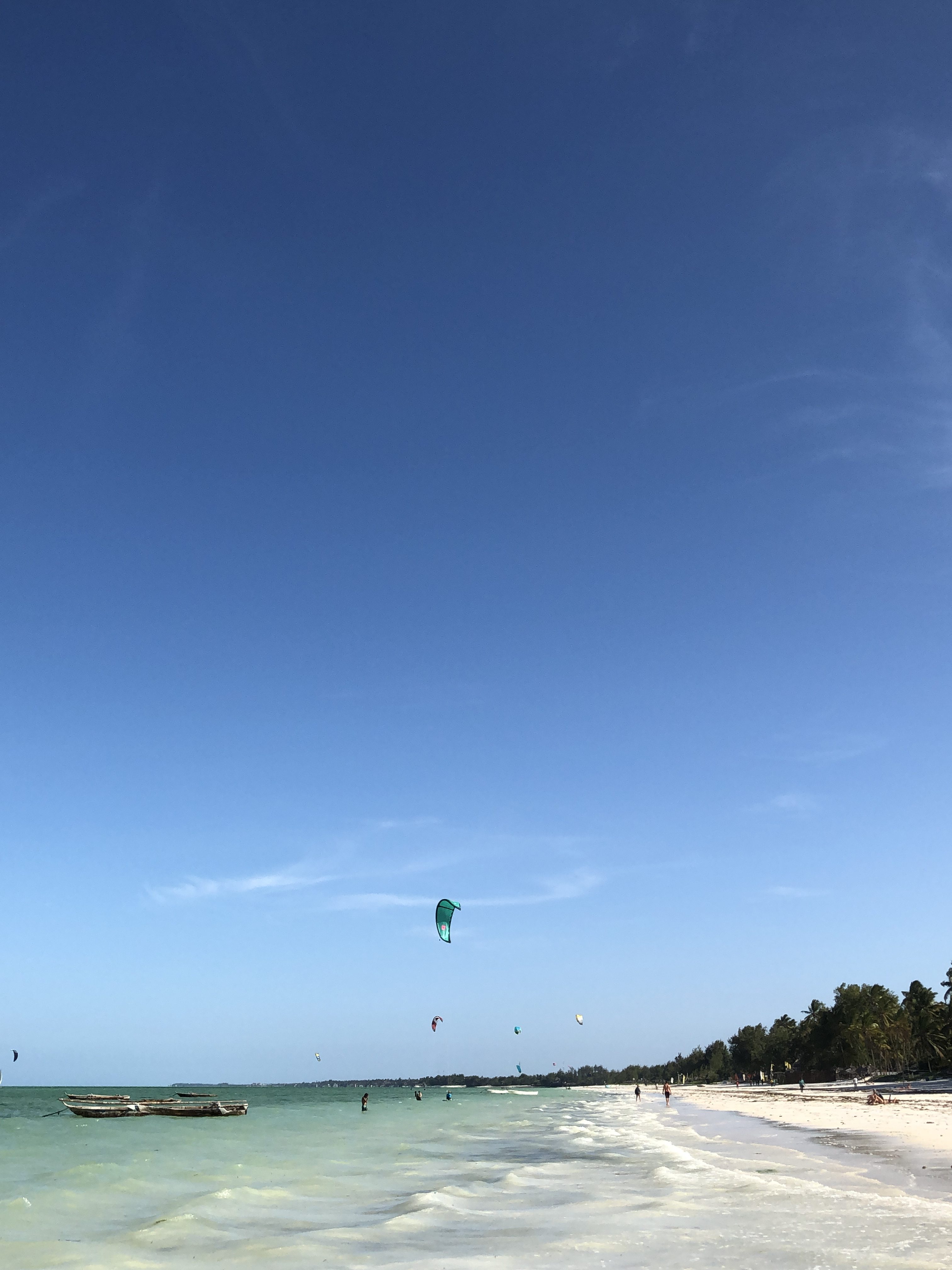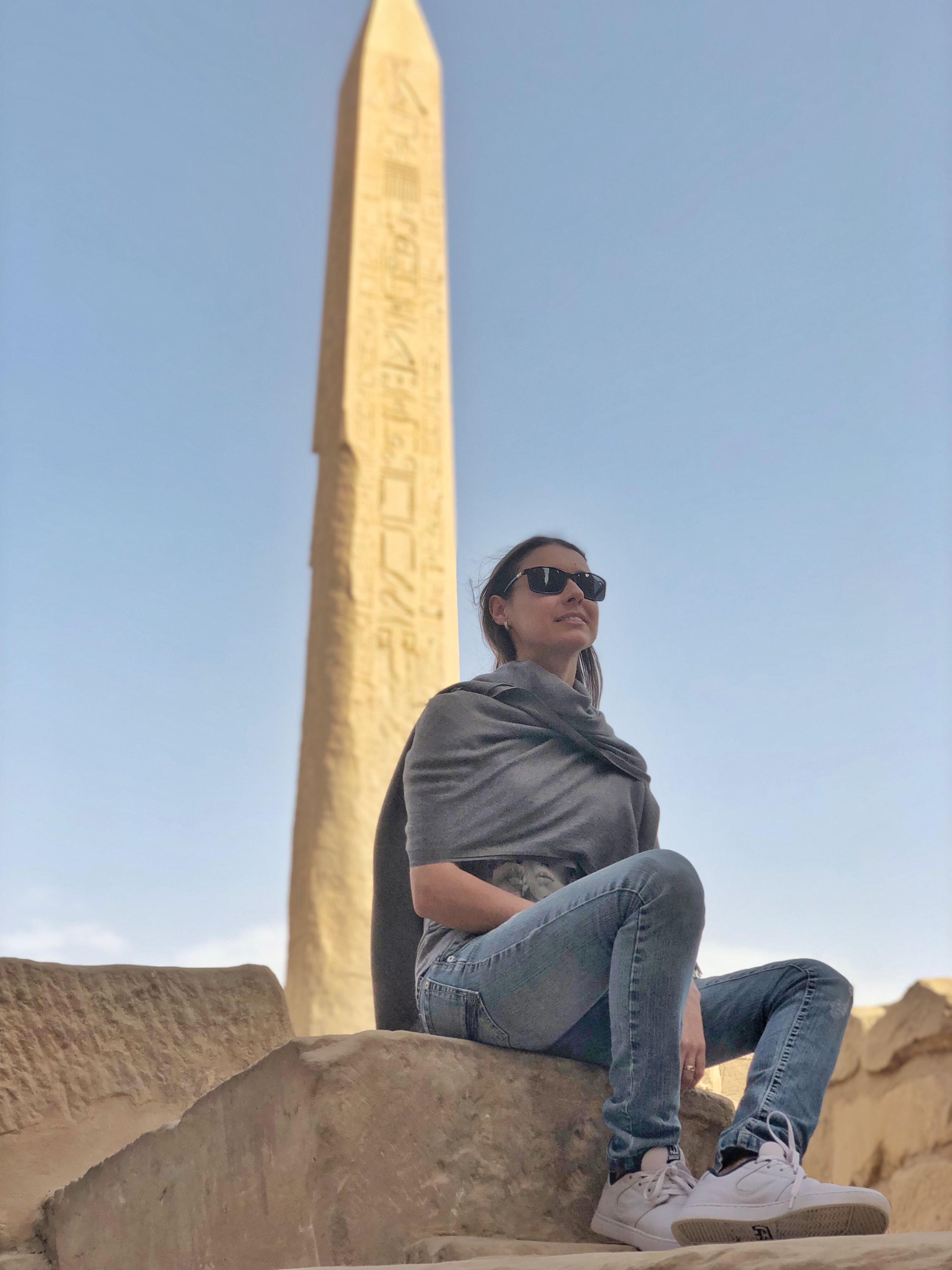
To get to Luxor, we got the express train number 2006, at Cairo station on the road to Luxor, and we traveled all night long. We were looking forward to see closely and know even more about the history of such ancient civilizations that lived thereabout, because we only knew what we read and watched on TV, and that was so outward. Now, facing those Pharaonic monuments, lots of questions were answered, but, on the other hand, other ones came out, so we could understand that only who lived then could have all the answers. At first, if you hear the name Thebes, take easy, because that’s the old name of Luxor. So, our journey to Egypt has just begun, and we’ll share with you a little bit about that trip.
Temple of Luxor
That temple is in the center of the city, right beside the Nile, and was built around 1400 B.C., for the gods of that time. Inside, there are a lot of sphinxes, that embellish the street of the entrance, and it seems to go to the Temple of Karnak, according to diggings that happen in the city so far. Right in the entrance, there are gigantic statues, still well preserved, and a lot of letterings in all of the walls, ceilings and pillars, and a lot of ones are still colorful.
You’d better be aware that there are some beggars that look like guards, they accost you suggesting the best points to take photos, but they soon ask for money. So, don’t be fooled!
Just reminding: that temple had been covered by sand until 18th century A.D.
The entrance fee was 140 EGP (30 reais) each person.

Beginning of the Temple Luxor

Hall of Pillars
Temple Karnak
Karnak was the second temple we visited, we walked since the Temple Luxor, 3 kilometers far from there, but dray drivers offering transportation were not what was lacking, the price is really cheap, but we preferred to go on foot, catching a glimpse of the Nile. That’s a huge complex of sanctuaries and other buildings, added since the beginning of the building in 2200 B.C, until the end, around 360 B.C, until a huge sacred lake located there (it even looks like an enormous pool).
And to think back that it all had been buried under the sand, and for more than two thousand years, until the diggings start around 1800 A.D, and they have kept on so far. The place is really big and, right in the entrance, there will be guides offering their service to tell you stories of the place, but there are some signs written in English, in front of the entrance places, where there are pictures and an explanation of what they were and did in that specific place. The entrance costs 150 EGP (33 reais) each person.

Pillars of Karnak

Access to the Temple of Karnak
Tour
- Colossi of Memnon
- Temple of Hatshepsut
- Valley of the Kings
- Temple of Medinet Habu
We decided to take a tour in group, because there are a lot of setbacks when wishing to rent a car in some places, you need to be used to the local maps, pay for parking lot, fuel the car, etc. We were offered that tour at the hotel where we stayed by Airbnb, it’s really worthwhile! Due to greater safety, speed, exactness and cost benefit. We left the hotel by a van, with more guests from there, we went towards the first stop, the Colossi of Memnon, where you can see gigantic statues facing the Nile and the rising sun, and they stand for the Pharaoh Amenhotep III, we met a guide there and one more van from another hotel, which followed with us buying the tickets and telling a lot about that place.
After a lot of photos, we visited the gigantic Temple of Hatshepsut, that was dedicated to the only female Pharaoh who ever existed, who reigned Egypt for about 22 years, because her stepson wasn’t old enough to take the throne. The entrance fee was 100EGP (22 reais) each person.
After catching a glimpse of an overview of Luxor from there, we visited the Valley of the Kings. That name was given to the place where the Pharaohs used to be buried, because the pyramids were constantly plundered, so they decided to hide the mummies and belongings of the Pharaohs in the caves.
You’ll see that each centimeter of the tomb is painted or written, and a lot of ones are well conserved, but all of ones are empty, once the items that were inside are exposed at the local museums and at Cairo museum.
The entrance fee is 200 EGP (44 reais) each person to visit until 03 tombs, except Tutankhamun and Set I ones, which have to be paid an extra fee. And it’s forbidden to film and photograph there, but if you pay 300 EGP (66 reais) each person in the entrance, you don’t need to fear the enforcer and delete everything in front of him!
And the last point visited was Temple of Medinet Habu, dedicated to Ramses III, one of the most conserved, and also plowed around 1799. The entrance fee is 120 EGP (25 reais) each person.
We’ll never forget that tour, which makes us wish to visit other Egyptian cities, to learn even more about that amazing culture!
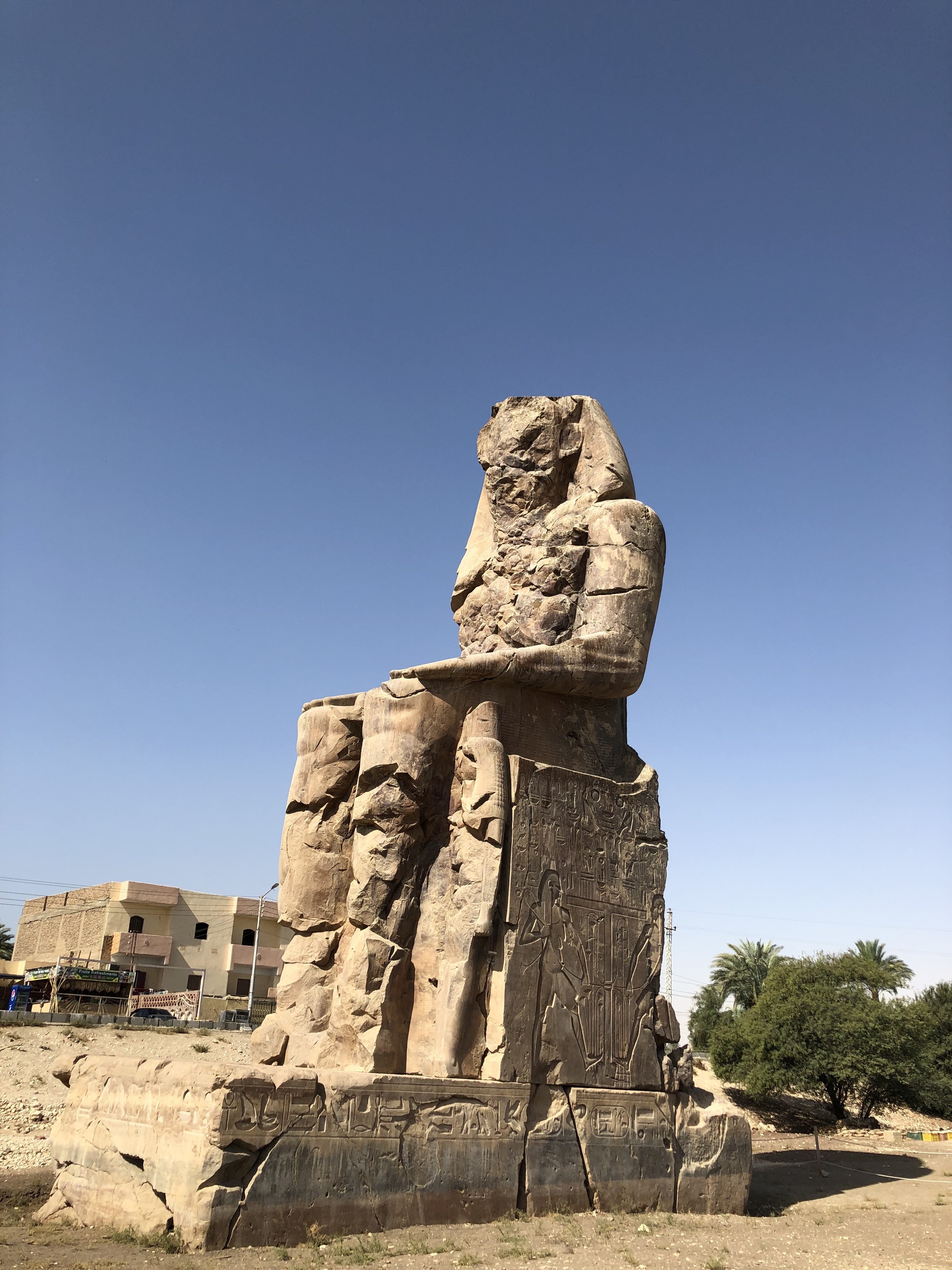
Colossi of Memnon
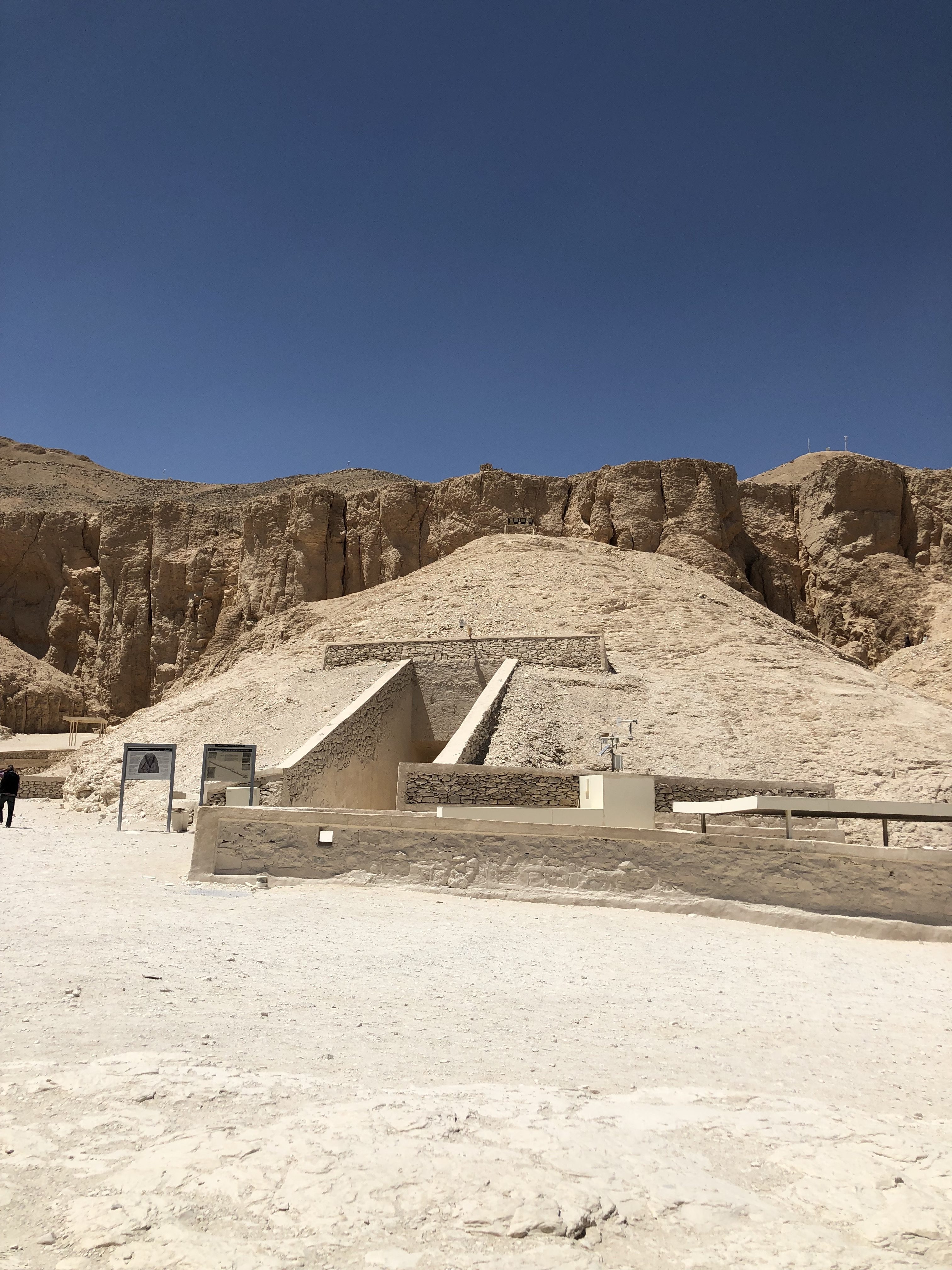
Valley of the Kings
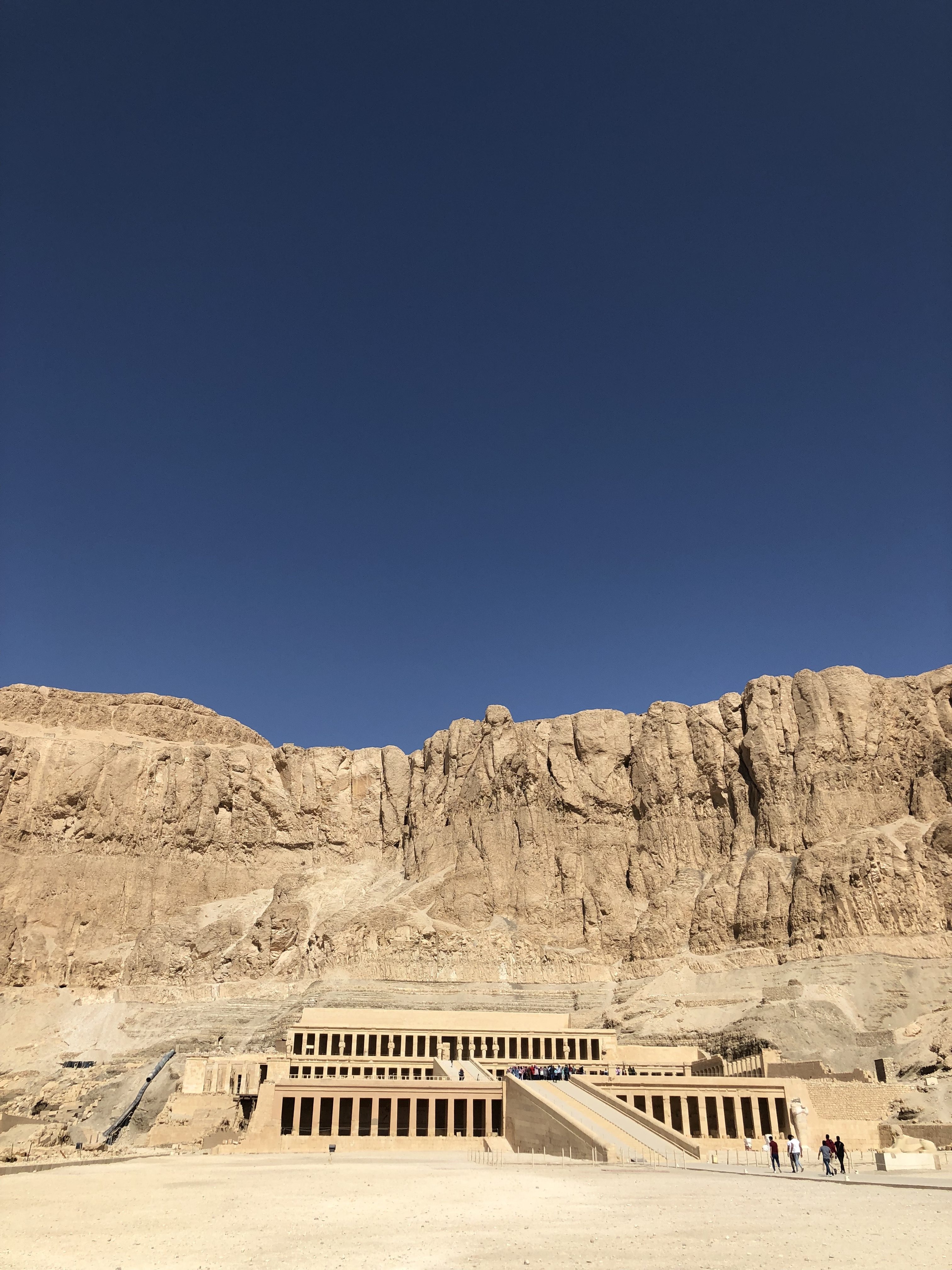
Temple of Hatshepsut
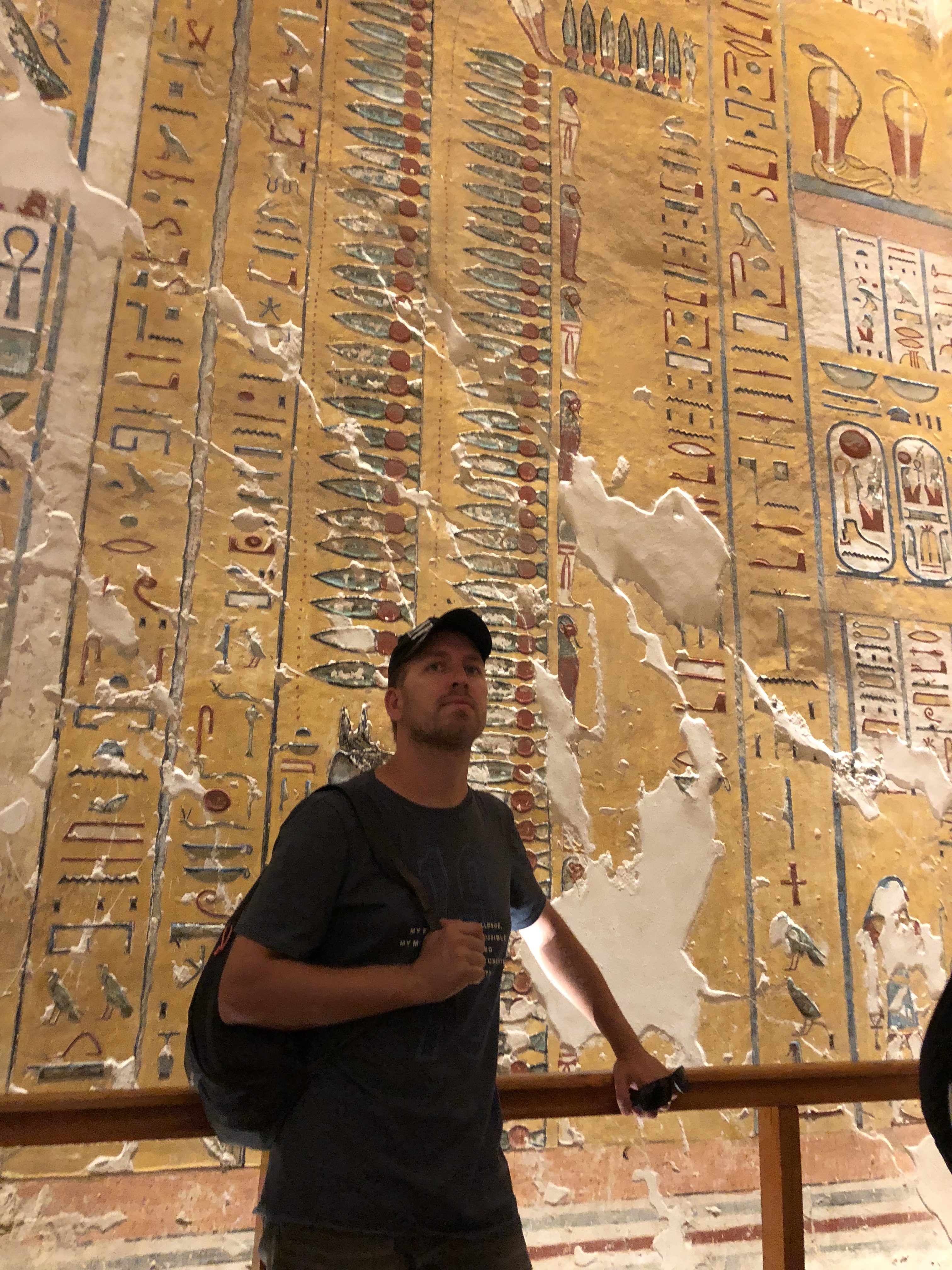
Inside the Tombs - Valley of the Kings
Where to stay in Luxor
We chose to lodge by Booking, and we found a great location in downtown, next to the train station, where we stayed close to supermarkets, temples, restaurants and subway, and we had total attention from our host.
Here is our link, where you can have a discount too!
Means of Transportation
The city has public transportation, such as trains, mini vans and buses. There are also lots of taxis in the streets, old cars, such as Belina. They’re usually very cheap, effective and safe. The range usually costed 2 Egyptian Pounds (0.50 cents of reais). It’s possible to go to different points of the city.
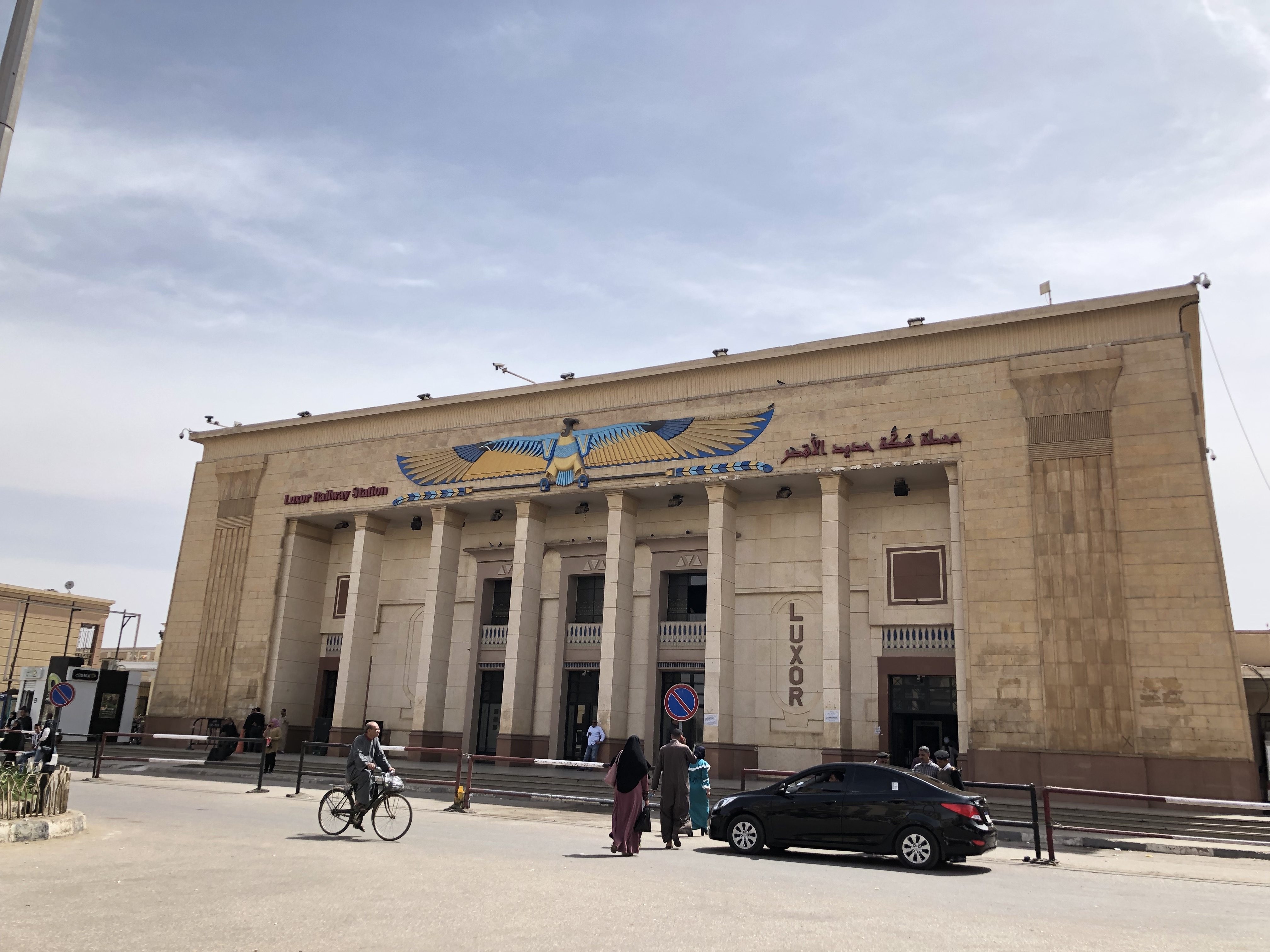
Train Station in Luxor

Our Train from Luxor to Cairo - 1 class
Safety of the city
We thought it’s very safe during the time we stayed there. We saw some cops in the streets, and guards in all of the touristic attractions. We walked a lot through all over the city and it was very peaceful, the people are super friendly and helpful.
.
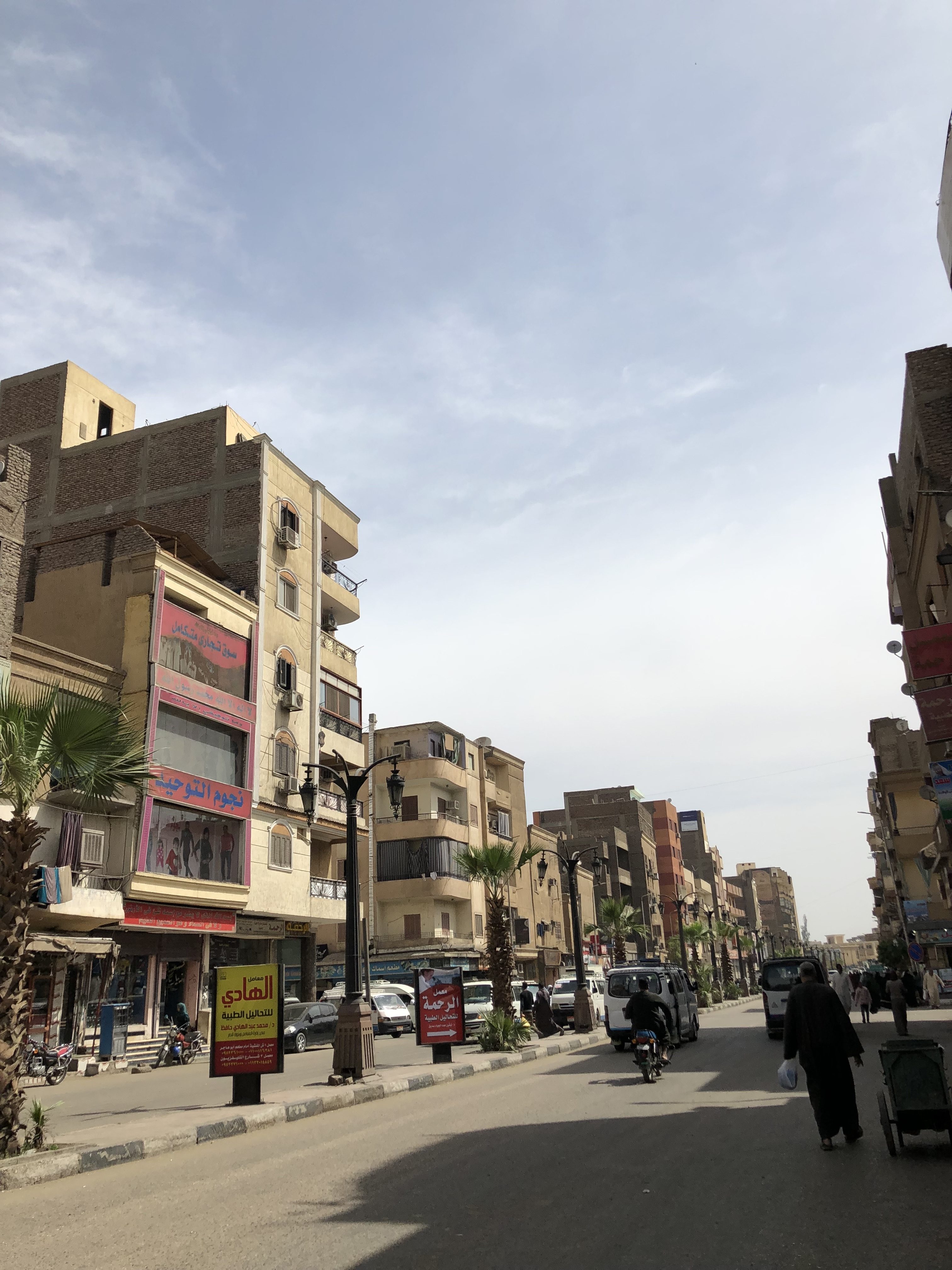
In the streets of Luxo
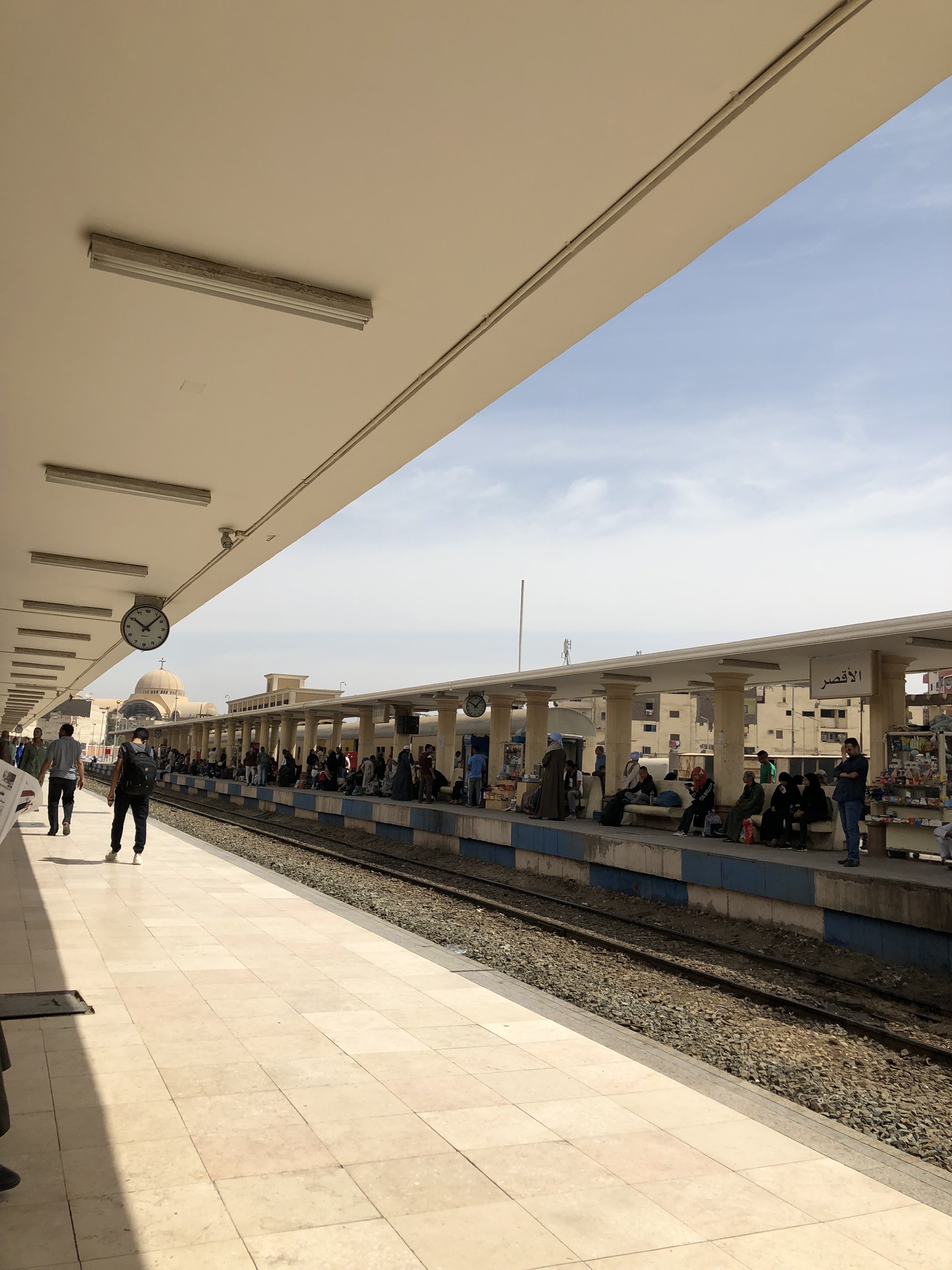
Inside the Train Station
Travel Insurance
For you to travel in peace, it’s important to have a travel insurance which keeps you safe and has a comprehensive coverage. We always ensure with April Brasil Seguro Viagem, which covers all around the world, it has an app that is easy to access, for you not to keep all that paperwork when you need to use it, the best part, you can access it from everywhere in the world with service in Portuguese.
So, don’t waste time and hire something safe, and we have a discount coupon, we’ll leave the link below too! Run and use it
DISCOUNT COUPON: COUTRIPS10%
Internet for your trip
To keep your connection during all the trip, you need a great SIM card, with a worldwide coverage, internet 3G and 4G. For that, we used Easysim4u, the best internet SIM card in the world for your trip. And see that we have been through some countries and we always had the coverage of the plans of Easysim4u. Don’t waste time, run and hire your SIM card for your next trip.
Here’s the link for you to access and ensure your connection to the internet in the world.
Kind of Currency
The local currency of Egypt is Egyptian Pound, and the exchange in dollar for April/2019 is $1.00 to 17.00 pounds. We recommend to exchange the currency in a safe place such as an airport or at Exchange, a bank in the city. It’s always good to have the local currency.
Expenses in Luxor
Our expenses in currency (REAIS) in Luxor during 5 days for the couple were the following:
Feeding: R$135.00 (market, snacks and drinks)
Tours: R$260.00 (temples, tombs)
Transportation: R$580.00 (flight, bus, train)
Lodging: R$180.00 (booking)
Visa: R$198.00 ($25 dollars per person)
Our days in Luxor were Pharaonic (LOL), with lots of discoveries about the past. We visited amazing places, monuments we didn’t even know that exist. Whomever enjoys a great history will have a lot to talk about. That’s nice that, in those places, you always end up learning something more, some surprising detail about the past.
If you are a student, don’t forget to take your card which is valid abroad, to get the discounts!


